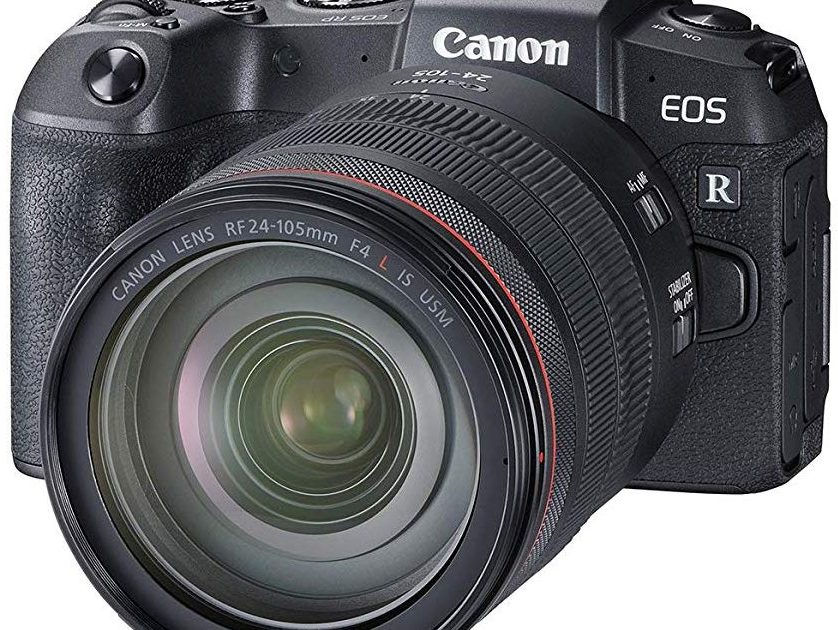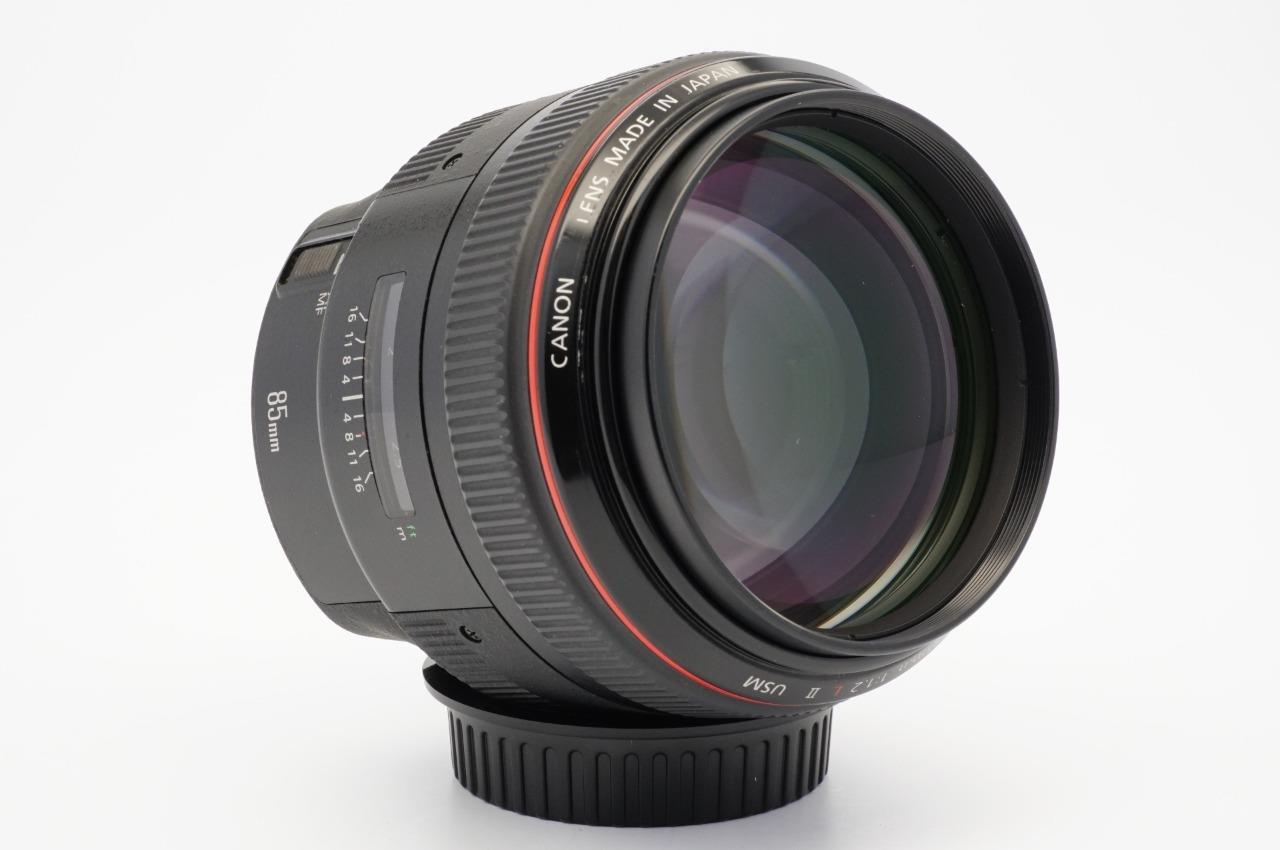92,000 yen (body), 150,000 yen (w/EF 24-85mm f/3.5-4.5 USM MS) This is an IX 240 SLR camera in the EOS line, making it compatible with EF lenses. It also features Eye Control which enables you to select the desired focusing point with your eye. A Multi-BASIS AF sensor ( + ) is used. The focusing point can also be selected manually. The EOS 5D Mark III's 3.2' TFT LCD monitor has 1,040,000 dots, anti-reflective construction and features Canon's Clear View II technology for bright, sharp display in any number of shooting situations. It's ideal for reviewing settings and images, as well as for shooting in Live View mode.
EOS RP Cutting HDMI Feed After 30 Min. By thomasumstattd. May 15, 2021 Canon Utilities EOS Capture. EOS Capture is a software that controls a camera from your computer. 3.6 (10 votes ) 1.5 ( See all) Canon Inc. Review Comments (1) Questions & Answers Update program info.
- Navigate ReviewJump to review page...
Canon EOS M5 Technical Info
by Mike Tomkins | Posted: 09/15/2016
Sensor


At the heart of the Canon EOS M5 is a new 24.2-effective megapixel, APS-C format CMOS image sensor which is similar to that featured in the Canon EOS 80D DSLR. The chip, which has the same effective resolution as that in the EOS M3, has a total resolution of 25.8 megapixels. Dimensions are 22.3 x 14.9mm with a 3:2 aspect ratio, for a pixel pitch of 3.72µm.
Processor
Output from the Canon M5's sensor is handled by a new DIGIC 7 image processor. That's a step up from the DIGIC 6 processors used in the EOS M3 and 80D, and we're told to expect image quality that's slightly better than that from the 80D as a result.
Sensitivity

As an indication of the improved performance of its imaging pipeline, the Canon M5 sports a sensitivity range of ISO 100 to 25,600-equivalents, all available without any ISO expansion function. By way of comparison, the EOS M3 had a sensitivity range of ISO 100 to 12,800-equivalents, expandable to ISO 25,600-equivalent. (Or in other words, the same overall range, but with the highest sensitivities disabled by default since Canon felt they didn't meet its image quality standards.)
Performance
Based on Canon's manufacturer ratings, performance of the EOS M5 is significantly improved, and that's huge news given that weak performance has been an Achilles heel of past EOS M-series cameras.

Canon rates startup time of the new camera as one second (we measured 1.2 second, but that includes taking a shot), and says it is approximately 66% faster in this respect than was the EOS M3. (In our tests, the M5's power on to first shot was twice as fast as the M3's.)
The difference in burst shooting performance is even more significant. The earlier EOS M3 was limited to a sedate 4.2 frames per second even with focus and exposure locked from the first frame. By way of contrast, Canon says that the EOS M5 will be capable of seven frames per second capture with autofocus enabled between frames, and as much as nine frames per second if you lock AF / AE from the first frame. (We measured 9.2-9.4 fps in the lab.)
And where the EOS M3 was limited to a paltry four raw frames before it ran out of buffer space, the M5 captured 18 frames in our tests, despite the much faster burst rate. See our Performance page for details.
Optics
Like its EOS M-series siblings, the Canon EOS M5 can accept EF-M mount lenses natively, and also accepts EF and EF-S lenses courtesy of the optional Mount Adapter EF-EOS M.
Autofocus
One of the key reasons for the Canon M5's improved performance can be found in its new image sensor, which now supports Canon's Dual Pixel CMOS AF technology, rather than the earlier Hybrid CMOS AF III system. Dual Pixel CMOS AF allows fast and precise phase-detection autofocus across 80% of the image area, and not surprisingly, with this new technology in place Canon says that the EOS M5 will offer the fastest autofocus performance of any EOS M-series camera to date. The system has a working range of EV -1 to 18, and for nearby subjects in low light, a built-in LED autofocus assist lamp is provided.
Interestingly, the Canon M5 has a new Touch and Drag function for autofocus point selection, which seems similar to a function we've seen in Olympus and Panasonic cameras in the past. This allows you to keep the camera's viewfinder to your eye, but at the same time, to move the AF frame by dragging a finger across the touch-screen LCD monitor, as if it were a laptop touch pad.
Oh, and there's good news for fans of manual focusing. The Canon EOS M5 includes a focus peaking function which will help you to determine the precise point of focus, whether framing your images on the electronic viewfinder or LCD panel.
Viewfinder
That electronic viewfinder, incidentally, is a new addition to the camera. The original Canon EOS M and M2 both lacked viewfinder support entirely, while the EOS M3 had no built-in viewfinder, and instead was reliant on a pricey and somewhat clumsy electronic viewfinder accessory.
The Canon M5, though, now has a built-in electronic viewfinder. It's based around a 0.39-inch OLED panel with a resolution of around. 2,360,000 dots, and allows a depth-of-field preview function, as well as three on-demand grid overlays to help with precise framing.
Display
Like the EOS M3 before it, the Canon EOS M5 has an articulated touch-screen LCD monitor. It can still be used as a control device, and still tilts upwards some 85 degrees or downwards a full 180 degrees for viewing from a wide range of angles, even for selfie shooting. (However, you won't be shooting those selfies on a tripod, since the screen tilts downwards and so will be obscured by the tripod head.)
But there's an important change here, too. The LCD panel itself is brand-new, and it's both a little bigger than before (3.2 inches diagonal, vs. 3.0 inches in the EOS M3), and also has higher resolution (1,620,000 dots, versus 1,040,000 dots in the M3.)
Exposure
As you'd expect in a camera aimed at enthusiast use, the Canon EOS M5 sports a full complement of Program, Aperture-priority, Shutter-priority and Manual exposure modes. It also boasts two Custom exposure modes which help you to quickly recall favored shooting setups, as well as Auto and scene modes which make it easier for beginners to get the shots they're after.
Exposures are determined using an evaluative metering system based on information from the image sensor. Partial, center-weighted evaluative and spot metering modes are also available, and the metering system has a working range of EV 1 to 20. Exposure compensation is available within a +/-3 EV range in 1/3 EV steps, and additionally, +/-2 EV of exposure bracketing is possible in 1/3 EV steps.
Shutter speeds on offer in the Canon M5 range from 1/4,000 to 30 seconds, and flash X-sync is at 1/200 second. As well as a hot shoe, the Canon EOS M5 also features a built-in, manual popup flash strobe with 15mm coverage and a guide number of five meters at ISO 100. Flash exposure compensation is available within a range of +/-2 EV in 1/3 EV steps, and flash exposures use Canon's E-TTL II metering system.
Video capture
Although it lacks 4K capture, the Canon EOS M5 can record high-definition movies at up to 60 frames per second with 1,920 x 1,080-pixel resolution.
And interestingly, there's a new Combination IS mode for movie capture, which combines the lens-based optical stabilization (if available for your chosen lens) with five-axis digital image stabilization, a pairing Canon says yields 'tremendously smooth videos'. If your lens lacks optical stabilization, the EOS M5 will still be able to use its five-axis digital stabilization to try and combat the shakes.
The Canon M5 can also shoot time-lapse videos at 1920 x 1080 (Full HD) at 30p (or 25p in PAL mode). You can specify scene type, the interval, the total number of shots, whether the exposure is fixed at the first shot or adjusted per shot, and whether you want to review each image (for 2 seconds). Sound is not recorded and focus remains constant after the first shot.
Audio for movies comes courtesy of either a built-in stereo microphone or an external mic jack. Unfortunately, no headphone jack is provided.
Wired connectivity
Cabled connections on the EOS M5 include provision for Micro USB 2.0, Type-D Micro HDMI, external 3.5mm microphone and a wired remote control (RS-60E3). There's also a flash hot shoe on the camera's top deck.
Canon Eos Info 1.2 Software
Wireless connectivity
As well as the built-in Wi-Fi and NFC of its predecessor, the Canon M5 also now sports a Bluetooth radio. The NFC compatibility allows for quick-and-easy pairing with Android devices, while the Bluetooth radio allows for simple pairing with both Android and iOS.
Canon Eos Info 1.2 Download
And courtesy of Bluetooth Smart technology, this low-powered connection can remain active at all times when you have the required app open, providing for remote control from your phone without the need to wait for a Wi-Fi connection to be established. If you need a remote live view, then the Wi-Fi connection will be necessary, though, and here the camera and smart device can communicate and pair themselves automatically using the Bluetooth Smart connection.
The EOS M5 also supports Canon's RC-6 infrared Remote Controller.
Storage
The Canon EOS M5 stores data on Secure Digital cards in a single slot, including the higher-capacity SDHC / SDXC cards, and the higher-speed UHS-I cards.
Canon Eos Camera Info 1.2
Power

The EOS M5 draws power from the same LP-E17 battery as used in the EOS M3, but battery life is said to have been improved substantially. You should now be able to capture 295 shots to CIPA testing standards (50% flash usage), regardless of whether you're using the LCD or electronic viewfinder. (That's unusual, because EVFs typically draw far more power than do LCDs, despite their much smaller size.) By way of comparison, the EOS M3 was capable of just 250 frames with its LCD monitor. Enabling Canon's ECO mode on the EOS M5 bumps battery life to 420 shots on the LCD monitor.
In-camera charging via USB is not supported and a dedicated battery charger is included. An optional DR-E17 DC coupler and CP-PS700 AC adapter are available.
Buy theCanonEOS M5
Your purchases support this site
Body Only (Black)
- Body Only (Black)
- Kit with 15-45mm f/3.5-6.3 Lens (Black)
- Kit with 18-150mm f/3.5-6.3 Lens (Black)
EOS M5 OverviewTech Info
- Navigate ReviewJump to review page...
Canon Eos Info 1.2 Price
Follow Imaging Resource